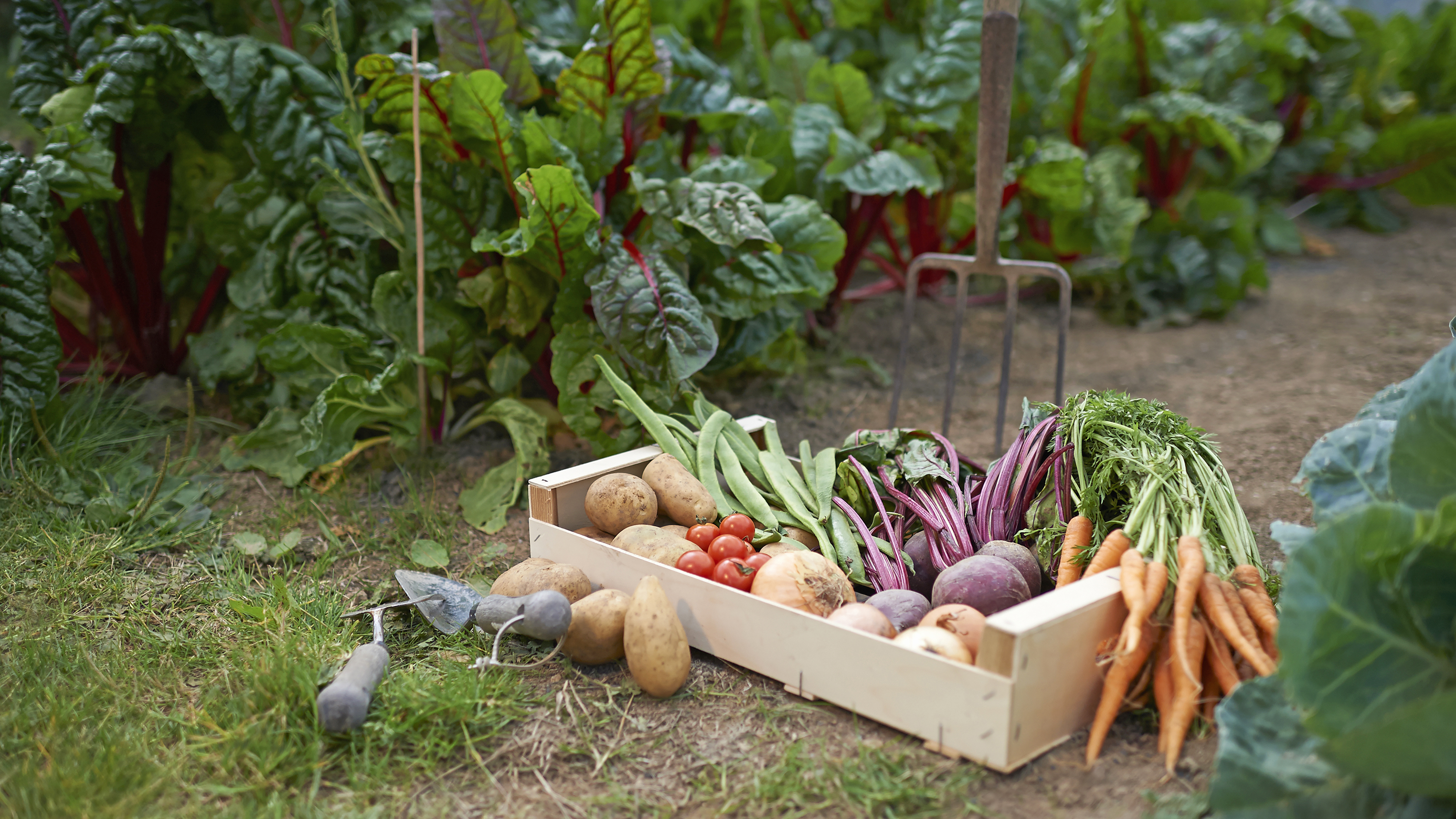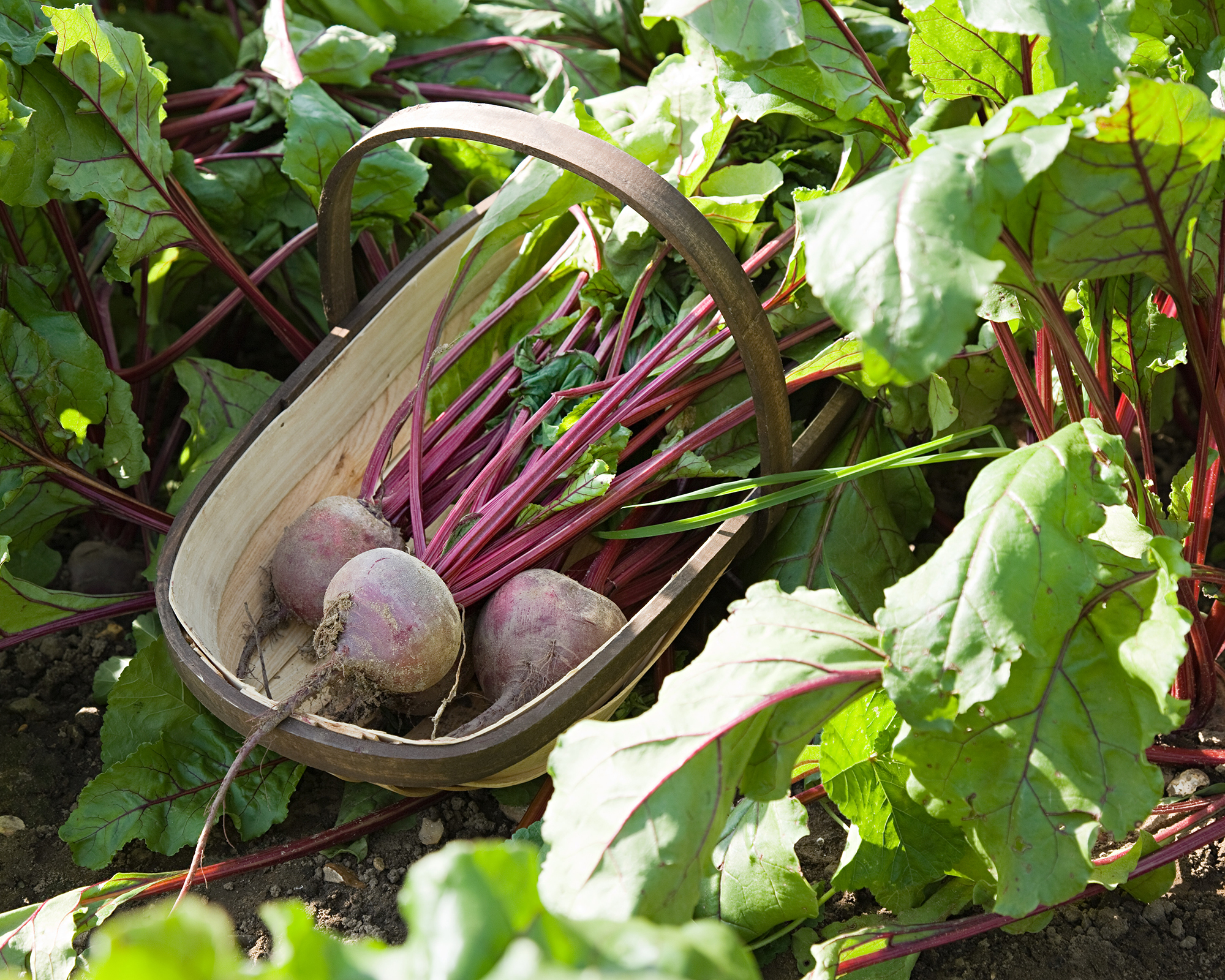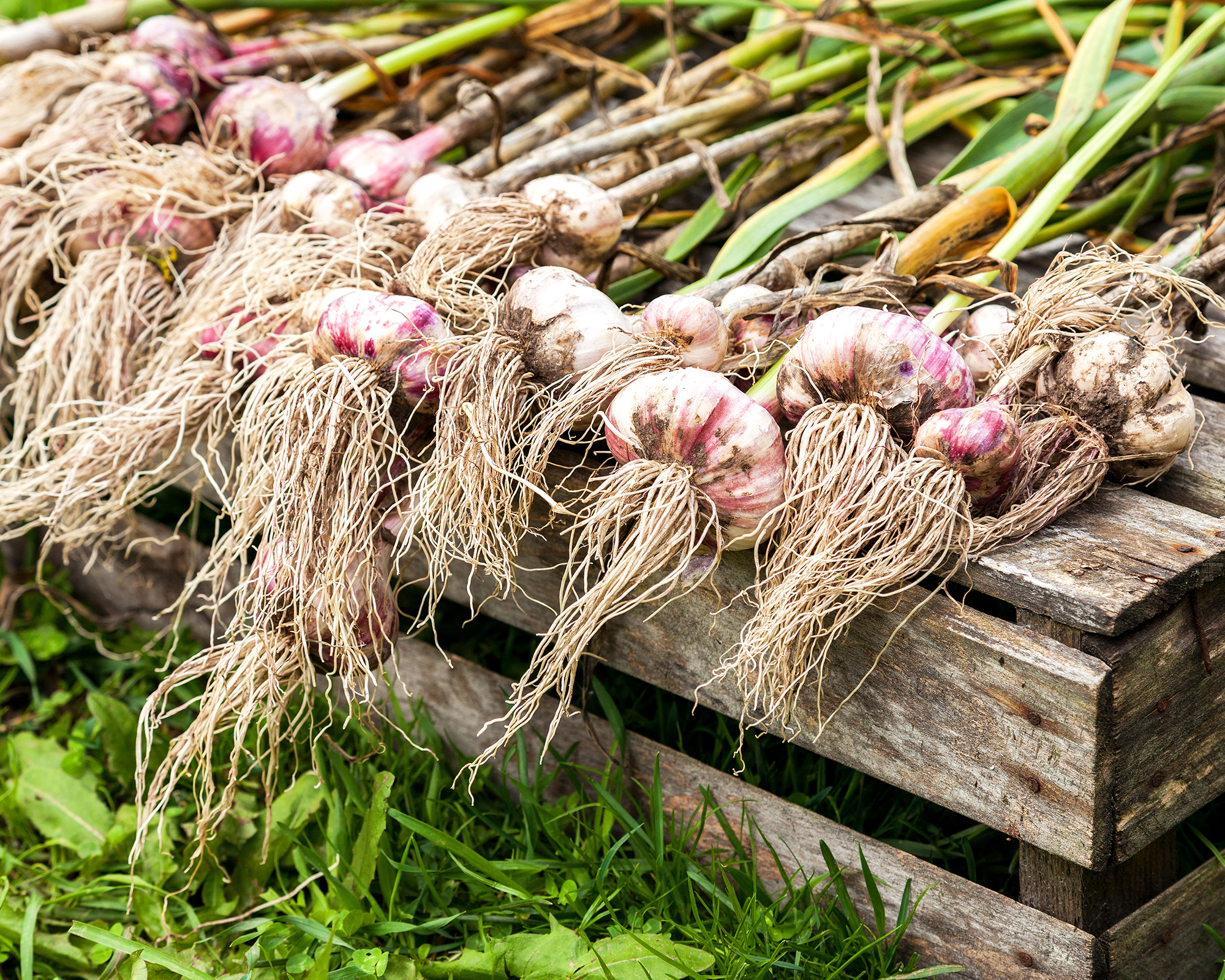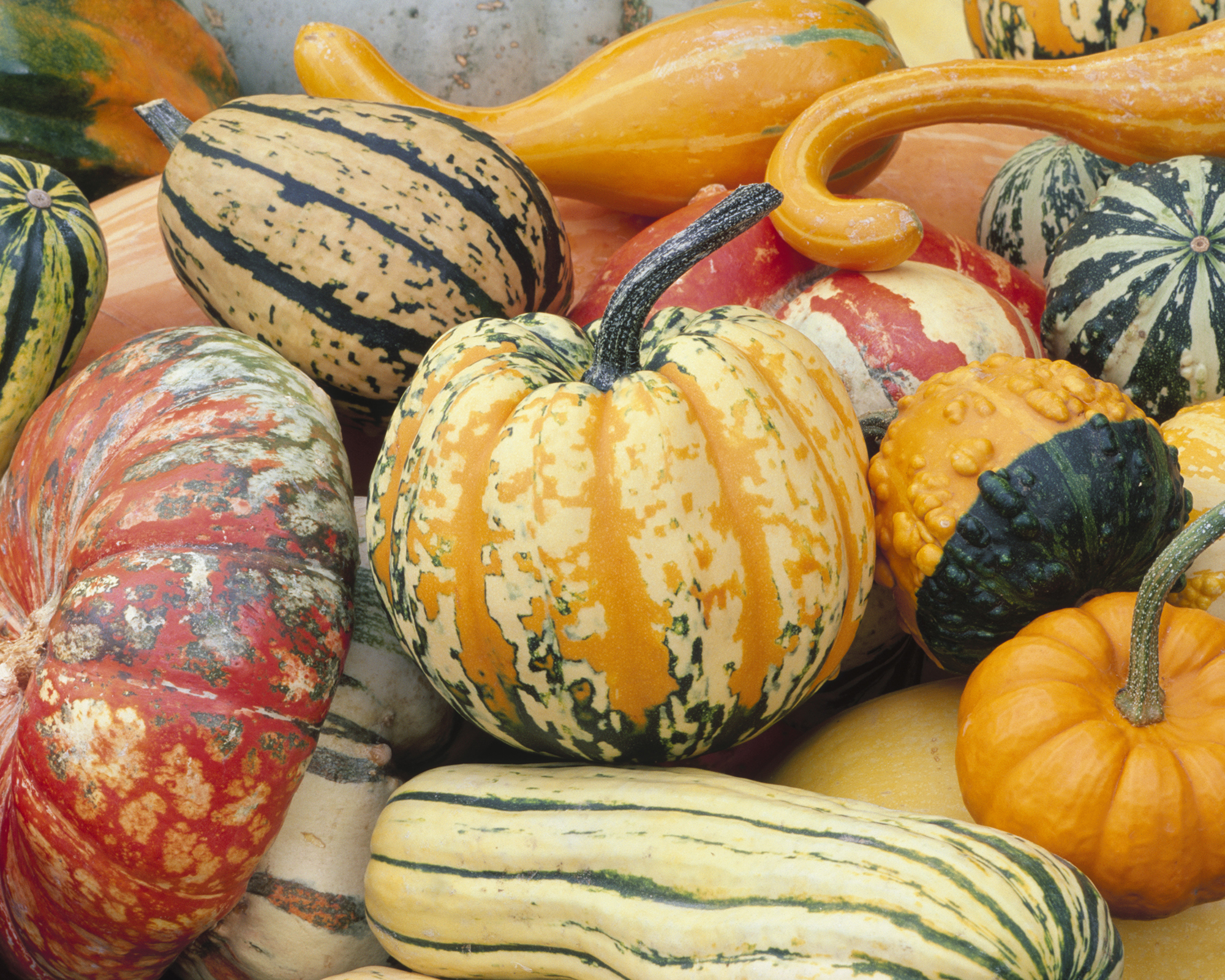6 Plant-And-Forget Vegetables That Will Thrive Even When Neglected
Nothing beats the flavor of home-grown vegetables, but if the thought of all that maintenance puts you off, then these no-fuss crops are the way to go. Get set to enjoy maximum fruits from minimal labor.


No gardener sets out to neglect their crops; however, the idea of easy vegetables that require minimal maintenance is appealing to those with busy lifestyles.
All vegetables will take a little effort at the planting and harvesting stages. But in the interim some crops can be left largely to their own devices.
Of course, if you are willing to put in some work watering, weeding, and fertilizing, then you will likely increase your plants' yield and performance. However, if you don't, then there is a good chance you will still have a tasty crop to enjoy at the end of the season.
The possible exception is periods of drought – so if you don’t have time to water, then consider installing a watering system to do the work for you. This is particularly a consideration for gardeners in warmer USDA planting zones.
These plant-and-forget vegetables can be successfully grown by beginner gardeners.
1. Beets

Growing beets is a breeze if you are starting with well-draining soil – otherwise you will simply need to amend it with organic matter.
Beets are cool-weather vegetables that can be grown all winter long in Southern states, or planted after the last frost in cooler zones. They can be positioned in partial shade.
Sign up for the Gardening Know How newsletter today and receive a free copy of our e-book "How to Grow Delicious Tomatoes".
Plant the seeds 1 to 2 inches (2.5 to 5cm) apart in rows, and lightly cover with soil before watering.
The plants should sprout within a week or two, and the beets will be ready to harvest within two to three months.
Eating beets when they are smaller will result in a sweeter flavor, while larger beets will be less flavorsome but have thicker skins that will enable you to store them for longer.
The great thing about growing beets is that you can also eat the beet greens. These make a delicious addition to salads and stir fries.
2. Rhubarb

Rhubarb is a perennial vegetable usually eaten in desserts – although it’s just as delicious in savory dishes. Plants come back year after year, but should not be harvested until their second or even third year, to enable them to become established.
Growing rhubarb is easily done by planting either crowns or divisions. The stalks and leaves need a bit of room to spread out, so each plant will require about a square yard of space (0.8 meter square).
If you plant rhubarb along the edge of your garden, then it won’t interfere with other crops when it surfaces each spring.
The crowns should be planted 1 or 2 inches (2.5 to 5cm) into the soil – any deeper and they may not come up.
Care for rhubarb plants is minimal – ideally mulch in spring, occasionally weed around the stalks, and water in dry weather.
Harvesting rhubarb is possible throughout the spring and summer, when the stalks reach at least 10 inches (25cm) in length. Forcing rhubarb is an option if you would like an early crop.
Slow down harvesting in late June/early July to ensure the plant has enough energy to make it through winter.
3. Garlic

There are few crops that require as little attention as garlic, but it does take a while to grow – around 180-210 days on average.
Growing garlic requires cool temperatures: in colder zones, plant four to six weeks before the ground freezes, and in warmer zones, you can plant throughout winter, until February.
Before planting, you should dig organic matter into the soil, such as compost or well-rotted manure.
Break up the bulb into individual cloves and plant each one about an inch (2.5cm) deep, spaced 2 to 4 inches (5 to 10cm) apart, in rows 12 to 18 inches (31 to 46cm) apart. The cloves should be planted with the fatter end at the bottom.
Cover the cloves over with soil, water, then sit back and wait for them to grow. You can harvest garlic once the leaves have turned brown.
For the best crop, feeding garlic plants is recommended every 3-4 weeks until late spring. You should also water in periods of drought. However, even if you completely forget about garlic, you will still likely have something to harvest come summertime.
4. Winter squash

There are a wide range of winter squash varieties to choose from – from butternut to spaghetti. The flavorsome fruits take a long time to ripen – 80 to 110 days – but as they are substantial enough to form the basis of main meals, the wait is worthwhile.
Growing winter squash is not difficult, but you do need some space for the vining plants to spread out.
You should start planting as soon as the chance of spring frost is over, and as their name suggests, winter squashes will be ready to harvest between fall and winter.
Plant seeds straight into the ground, into rich, well-drained soil formed into hills or mounds. Once they reach about 2 inches (5cm) in height, thin seedlings to three plants per hill, spaced three feet (1m) apart.
After this, you can leave the plants to vine and take over their mounds. However, for best results you should water in dry periods and put straw mulch under the fruits to protect them from discoloring on the ground.
5. Potatoes

Potatoes are a cool-season vegetable ideally suited for northern climates, though they can be grown as a winter crop in the South.
Growing potatoes is an appealing option due to there being over 100 types of potatoes to choose from. It is also a versatile crop that stores well.
Early season potatoes are planted in late winter or early spring and take up to three months to reach maturity. They are the lowest maintenance option and can be grown as container potatoes or in grow bags.
Mid season – or maincrop – potatoes are the main, larger crop that are planted in the spring and take 4-5 months to reach maturity. They are best planted in the ground.
However, while some patience is necessary, potatoes are undemanding plants, requiring little more than mild temperatures and soil to grow in.
It is best to plant seed potatoes – rather than those from the grocery store, which may not sprout, and could harbor diseases. Chitting seed potatoes will enable you to get a head start on growing them.
When planting seed potatoes, gardeners are usually advised to plant them around 2-3 inches (5 to 7.5cm) deep and about 24 inches (60cm) apart, then to "hill" or "earth" up around the leafy growth. The reason is that initially the potatoes will get enough light to grow, but that they are then protected from the sun so as not to turn green.
However, the plant-and-forget solution is to initially bury your seed potatoes 5-6 inches (12 to 15cm) deep, which will avoid sun exposure and ensure they will still grow without further intervention.
For best results, enrich the soil with a balanced fertilizer at the time of planting, and then fertilize once more when the plants are 8 to 12 inches (20-31cm) tall. Water the plants in dry periods.
Harvesting potatoes once the plants begin to wilt and yellow will ensure they don’t stay in the ground for too long.
6. Onions

The secret to growing onions with minimal fuss is to plant onion sets, rather than seeds. These are marble-sized onion seedlings that were started the previous year and then stored over winter.
You can plant the sets when the temperatures are around 50°F (10°C) in a sunny spot in well-draining soil improved with organic matter.
Plant about 3/4 inch (2cm) deep, spaced 2 to 4 inches (5 to 10cm) apart, in rows 10 to 12 inches (25 to 30cm) apart. Increase the spacing slightly if you'd prefer large onions. Cover with soil, so that that tips of the bulbs are just protruding through the soil, then firm in, and water well.
Keep an eye out for weeds and water in periods of drought. If you spot any flowers, remove them to prevent onions from bolting.
Harvesting onions can be done around 100-120 after planting. Look for when the tops naturally fall over and brown.

Melanie is an experienced gardener and has worked in homes and gardens media for over 20 years. She previously served as Editor on Period Living magazine, and worked for Homes & Gardens, Gardening Etc, Real Homes, and Homebuilding & Renovating. Melanie has spent the last few years transforming her own garden, which is constantly evolving as a work in progress. She is also a passionate organic home grower, having experimented with almost every type of vegetable at some point. In her home, Melanie tends to an extensive houseplant collection and is particularly fond of orchids.